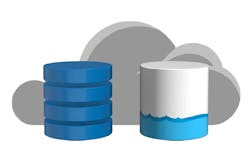It has become clear to many manufacturing organizations what a boon edge computing is to handling data in real time—getting the computing power closer to the action for analytics on the fly. But it should also be clear that edge computing in no way replaces cloud computing, but rather works in tandem with it.
The cloud is where the heavy lifting can be done. It’s also the place where all the various entities can come together and compare notes—sharing and analyzing data across sites, for example, so that everybody benefits from the shared information.
Cloud was a prominent part of the discussion at the most recent Honeywell Users Group (HUG) Americas symposium in San Antonio, Texas, where Honeywell Process Solutions (HPS) made announcements such as cloud for cybersecurity and cloud-based SCADA. Now, as part of its Connected Plant portfolio, Honeywell continues its push to the cloud with Uniformance Cloud Historian, which uses cloud technology to analyze data across multiple sites to improve asset availability and increase plant uptime.
“Uniformance Cloud Historian brings the full power of cloud and Big Data to Honeywell’s traditional process historian for the first time, connecting even the most complex multi-site organizations effortlessly,” said Vimal Kapur, president of HPS. “The solution makes it possible to leverage insights found at one plant across all plants—allowing smarter, more strategic decisions to be made and action to be taken.”
Based on native cloud technology and the Honeywell Sentience Internet of Things (IoT) platform, the software as a service (SaaS) hosts applications for visualization and analysis, making it easy to connect local data sources to a central cloud historian. It collects, stores and enables replay of historical and continuous plant and production site process data, and makes it visible in the cloud in near real time. On the one hand is a time series data store, which enables operators and managers to execute and make decisions; on the other hand is the data lake, which enables data scientists to discover correlations between process data and other business data in the enterprise.
In much the same way the Advanced Threat Intelligence Exchange (ATIX) provides more capable cybersecurity systems by enabling analysis of threats across locations and across industries, the cloud technology behind the Uniformance Cloud Historian should enable multiple locations to benefit from the increased insight of shared intelligence.
A secure cloud is an ideal environment for historian applications, according to Janice Abel, principal analyst for ARC Advisory Group. “With the Uniformance Cloud Historian, Honeywell is not just hosting historians on-site, but is enabling users with new edge, cloud and data lake technologies for process, asset and business data,” she said. “The historian should make it quicker and easier for users in industrial plants to access, analyze and leverage data to improve both plant and enterprise performance.”
The nature of cloud technologies—reducing the cost and time related to installation, hosting and maintenance of hardware and software on premise—also means that projects that previously took weeks or months can now be achieved in hours. Combined with the ability to use a customer’s existing tools and functions, these efficiencies can significantly reduce deployment and engineering time. Because Uniformance Cloud Historian is built on the Honeywell Sentience IoT platform, future upgrades can be delivered to customers through applications and services.

